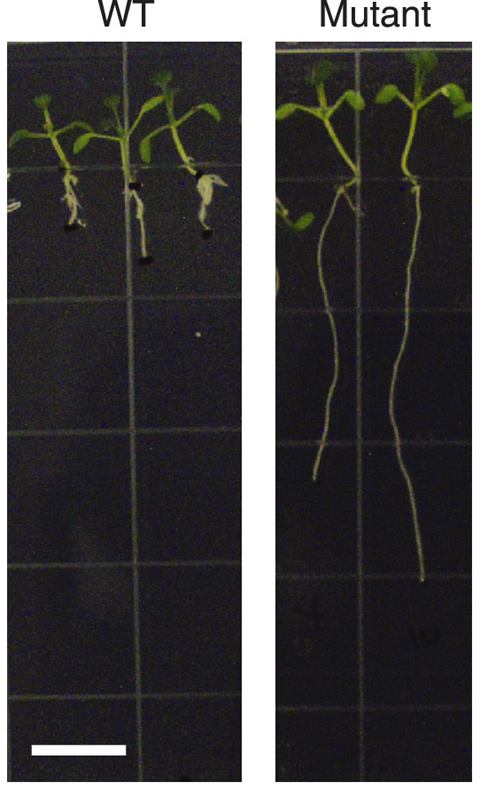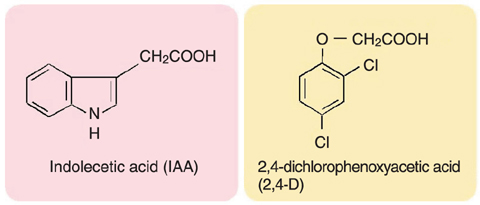
Fig.4-4 Phenotype of the mutant

Fig.4-5 Structure of Auxin
Fig.4-6 Amino acid sequences of SMAPs from various organisms
When living organisms are exposed to ionizing radiation, mutants are generated as a consequence of change in DNA sequence. Because ion beams give higher energy to a more localized area than γ-rays, it can delete and translocate larger DNA fragments. The characteristic effects of ion beams enable them to facilitate generation of novel mutants and greatly contribute to the research field of plant breeding.
Inducing mutants is also helpful for basic science. Numerous mutants are used for elucidating a mechanism of plant growth regulation. The number of required mutants has increased as research in this field has progressed, and the capacity of traditional mutagens such as chemical reagents to produce mutants has reached the saturation point. This fact prompted us to isolate novel mutants that are helpful in elucidating plant growth regulation by taking advantage of the characteristic effects of ion-beams.
We screened mutants exhibiting altered response to plant hormone auxin, which controls plant growth and differentiation, from approximate 30,000 Arabidopsis seedlings propagated from ion beam-irradiated seeds. We successfully obtained a mutant with novel characteristics: normal response to natural auxin indoleacetic acid (IAA) but less sensitivity to synthetic auxin 2,4-dichlropnenoxyacetic acid (2,4-D) (Fig.4-4, Fig.4-5). DNA analysis revealed a 44,000 base pair deletion, which was probably caused by the ion-beam, in mutant DNA. There were ten putative genes in this deleted region. We introduced small DNA fragments derived from this deleted region one at a time to the mutants. We found a fragment that recovers the wild type phenotype and so identified the gene that is responsible for the unique auxin response of the mutant. Because the gene encodes very small and acidic protein, we named it as SMAP1 gene (Fig.4-6). Interestingly, database search revealed that the SMAP1-like genes are present not only in plant but also in animal genomes, implying that the SMAP genes might be involved in a still unknown regulatory mechanism which plays a pivotal role and has been evolutionally conserved. To date, there have been no reports about the function of SMAP genes. Our finding by using ion beams showed the importance of the gene in plant growth regulation. Elucidation of the molecular mechanism by which SMAP1-encoded protein regulates auxin-directed growth and of the roles of SMAP genes in other organisms are future challenges.